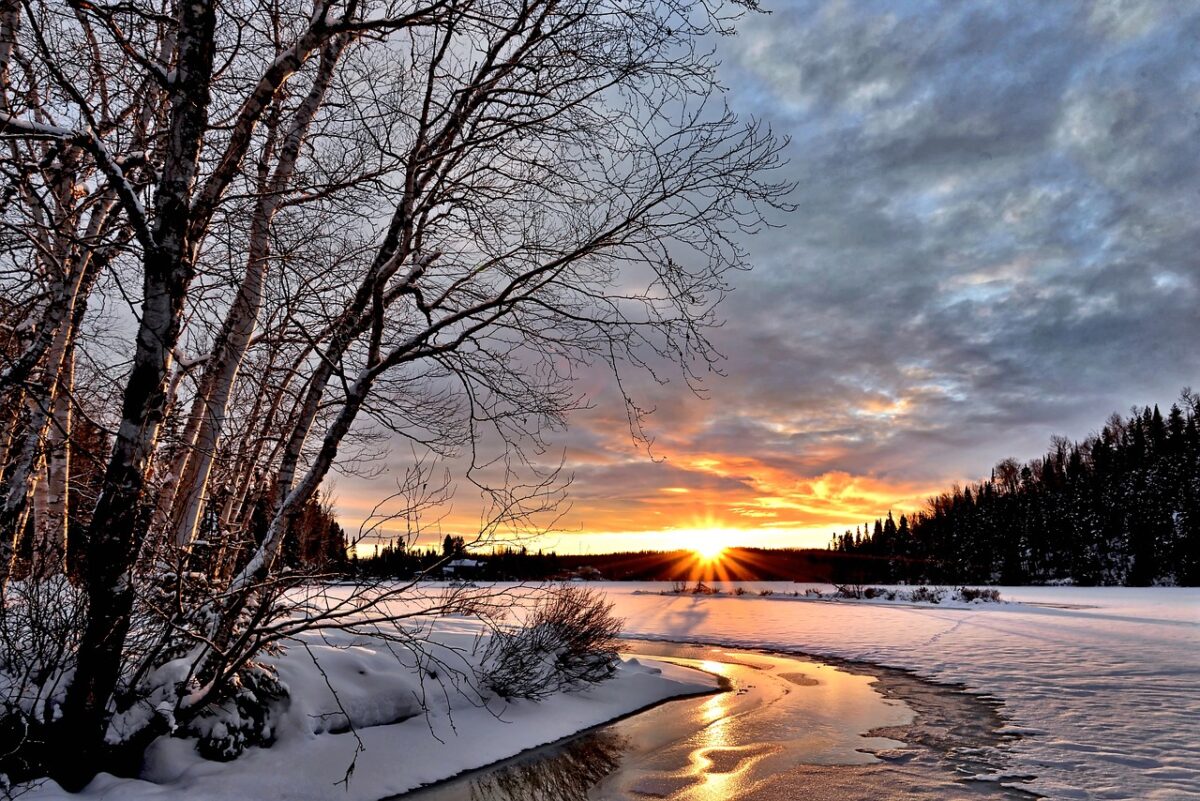Canada transforms into a breathtaking winter wonderland each year, offering unique photographic opportunities that capture the essence of its cold-weather beauty. From the icy expanse of the Arctic to the snow-covered streets of Vancouver, winter in Canada is a season of enchanting landscapes and magical moments. This article delves into how to make the most of Canada’s winter scenes, providing tips and techniques for photographers aiming to capture the stark, serene beauty of Canadian winters.
Preparing for Winter Photography in Canada
Before venturing out into the cold with your camera, preparation is key to not only capturing great photos but also ensuring your safety and comfort in harsh winter conditions.
Dress Appropriately
Winter in Canada can be brutally cold, so wearing the right clothing is essential. Layering is your best strategy; start with a moisture-wicking base layer, add an insulating middle layer, and finish with a waterproof and windproof outer layer. Don’t forget accessories like gloves, a warm hat, and waterproof boots.
Protect Your Gear
Camera equipment can be sensitive to extreme cold and moisture. Use a weather-resistant camera bag, keep batteries warm by storing them close to your body, and consider a rain cover for your camera to protect against snow and sleet.
Plan Your Locations
Research and plan your photography locations ahead of time. Winter days are shorter, and you’ll need to maximize the available light. Knowing where and when you’ll shoot can help you make the most of your time.
Capturing the Magic of Canadian Winters
Photographing winter scenes in Canada requires an eye for composition and an understanding of how to work with winter light and landscapes. Here are some tips to help you capture stunning winter photographs.
Understanding Light
Winter light can be tricky but beautiful. The low angle of the sun provides long shadows and soft light which can add a dramatic effect to your photographs. Overcast days, common in Canadian winters, can reduce shadows and give a soft box effect—perfect for capturing the subtle details in snow and ice.
Composing Winter Scenes
When composing your shots, look for contrasts and colors that stand out against the white snow. Dark objects, colorful buildings, or a lone figure in a vibrant jacket can all become focal points in your composition. Pay attention to leading lines and natural frames—snow-covered trees or frozen streams can lead the eye and add depth to your photos.
Capturing Snow and Ice
Snow and ice can be challenging to photograph due to their bright and reflective surfaces. To capture the texture and detail of the snow, use a polarizing filter to reduce glare and enhance colors. Adjust your exposure settings to avoid overexposed shots; snow can often trick your camera’s meter into underexposing the scene.
Essential Gear for Winter Photography
To get the most out of your winter photography sessions in Canada, having the right equipment is crucial. Here’s a list of essential gear:
- DSLR or Mirrorless Camera: A good quality camera that allows manual control over settings.
- Lenses: A selection of lenses; a wide-angle lens for landscapes and a telephoto lens for capturing distant winter wildlife.
- Tripod: A sturdy tripod is essential for stability, especially in slippery conditions.
- Polarizing Filter: Helps reduce glare from snow and ice and enhances the blue of the sky.
- Extra Batteries: Battery life diminishes quickly in the cold, so extra batteries are a must.
- Weather-Resistant Camera Bag: To protect your gear from snow and moisture.
With these tools at your disposal, you’ll be well-equipped to capture the stunning beauty of Canada’s winters.
Iconic Locations for Winter Photography in Canada
Canada is vast and each region offers unique winter landscapes perfect for photography. Here are a few iconic locations:
- Banff National Park, Alberta: Famous for its stunning Rocky Mountain peaks and frozen lakes, it’s a winter photography paradise.
- Quebec City, Quebec: The charming old town, dressed in snow and festive lights, offers a picturesque setting for urban winter photography.
- Niagara Falls, Ontario: In winter, the falls are surrounded by ice and snow, creating spectacular icy scenes.
Yukon Territory: For those looking to capture the ethereal beauty of the Northern Lights, Yukon is one of the best places in Canada.
Showcasing Your Images
After capturing the serene beauty of Canada’s winter landscapes, many photographers choose to compile their images into photobooks. These collections not only serve as a personal memento of their adventures but also as a stunning visual journey through the seasons. The photobooks Canada photography trips can produce give a rewarding way to preserve these memories, allowing photographers to revisit the frozen tranquility of Canadian winters anytime they wish. Whether showcasing the silent, snowy forests or the icy blue expanse of a frozen lake, these photobooks become cherished possessions that hold the essence of Canada’s picturesque winters.
Conclusion
Canada’s winter landscape is a photographer’s dream, offering endless opportunities to capture the quiet beauty of its snowy expanses and icy vistas. By preparing properly, understanding how to handle winter light and landscapes, and using the right gear, photographers can create breathtaking images that reflect the serene and rugged nature of a Canadian winter. So wrap up warm, and get ready to explore and photograph Canada’s wonderful winter wilderness.
